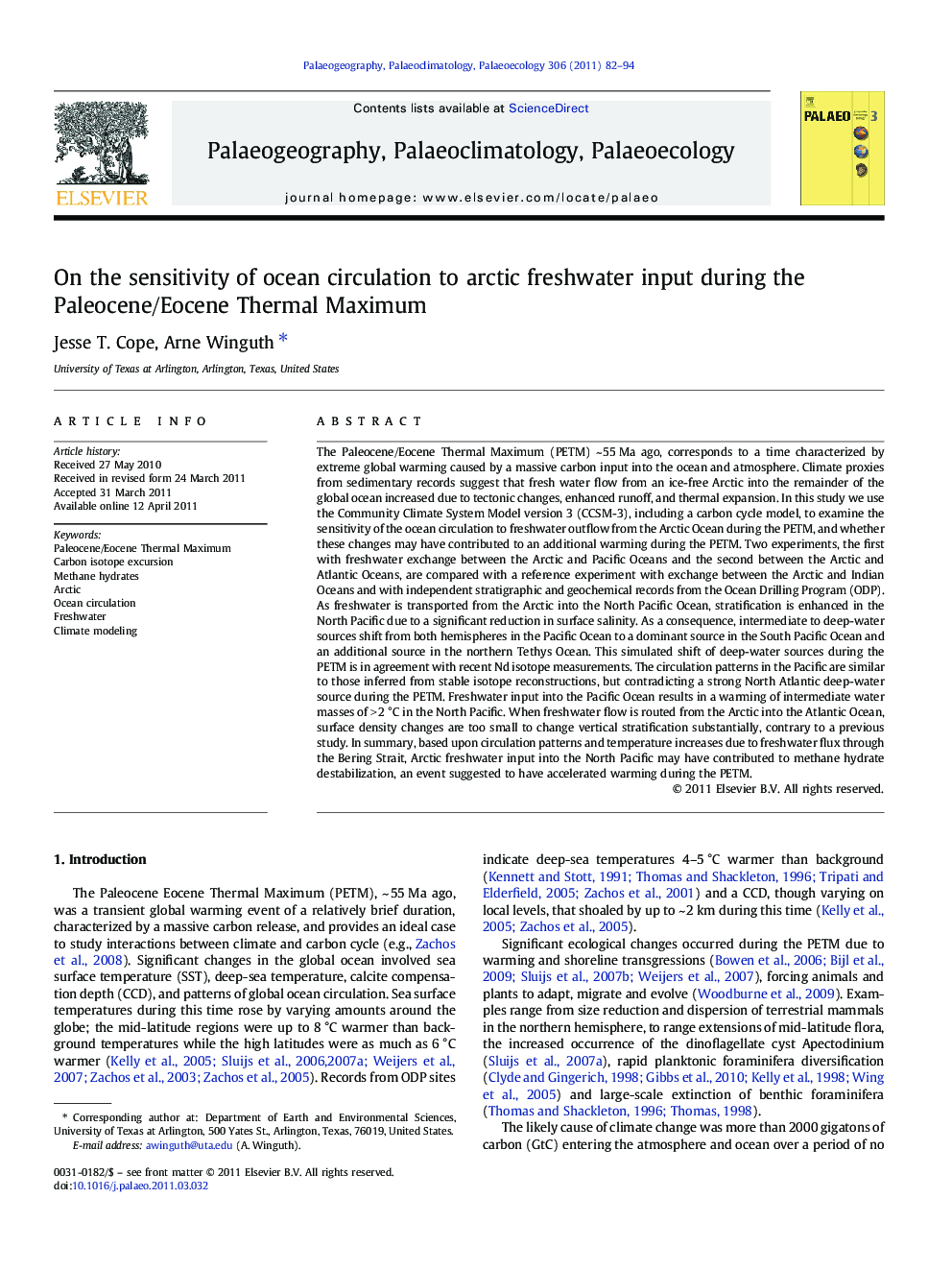| کد مقاله | کد نشریه | سال انتشار | مقاله انگلیسی | نسخه تمام متن |
|---|---|---|---|---|
| 6350616 | 1622255 | 2011 | 13 صفحه PDF | دانلود رایگان |

The Paleocene/Eocene Thermal Maximum (PETM) ~ 55 Ma ago, corresponds to a time characterized by extreme global warming caused by a massive carbon input into the ocean and atmosphere. Climate proxies from sedimentary records suggest that fresh water flow from an ice-free Arctic into the remainder of the global ocean increased due to tectonic changes, enhanced runoff, and thermal expansion. In this study we use the Community Climate System Model version 3 (CCSM-3), including a carbon cycle model, to examine the sensitivity of the ocean circulation to freshwater outflow from the Arctic Ocean during the PETM, and whether these changes may have contributed to an additional warming during the PETM. Two experiments, the first with freshwater exchange between the Arctic and Pacific Oceans and the second between the Arctic and Atlantic Oceans, are compared with a reference experiment with exchange between the Arctic and Indian Oceans and with independent stratigraphic and geochemical records from the Ocean Drilling Program (ODP). As freshwater is transported from the Arctic into the North Pacific Ocean, stratification is enhanced in the North Pacific due to a significant reduction in surface salinity. As a consequence, intermediate to deep-water sources shift from both hemispheres in the Pacific Ocean to a dominant source in the South Pacific Ocean and an additional source in the northern Tethys Ocean. This simulated shift of deep-water sources during the PETM is in agreement with recent Nd isotope measurements. The circulation patterns in the Pacific are similar to those inferred from stable isotope reconstructions, but contradicting a strong North Atlantic deep-water source during the PETM. Freshwater input into the Pacific Ocean results in a warming of intermediate water masses of > 2 °C in the North Pacific. When freshwater flow is routed from the Arctic into the Atlantic Ocean, surface density changes are too small to change vertical stratification substantially, contrary to a previous study. In summary, based upon circulation patterns and temperature increases due to freshwater flux through the Bering Strait, Arctic freshwater input into the North Pacific may have contributed to methane hydrate destabilization, an event suggested to have accelerated warming during the PETM.
Research highlights⺠In this study, we simulate Arctic freshwater export during the PETM with CCSM-3. ⺠Freshwater flux into the Pacific results in a warming of water masses of > 2 °C. ⺠Circulation changes and warming can trigger release of methane hydrates. ⺠Destabilization of methane hydrates may cause a positive climate feedback loop.
Journal: Palaeogeography, Palaeoclimatology, Palaeoecology - Volume 306, Issues 1â2, 1 June 2011, Pages 82-94